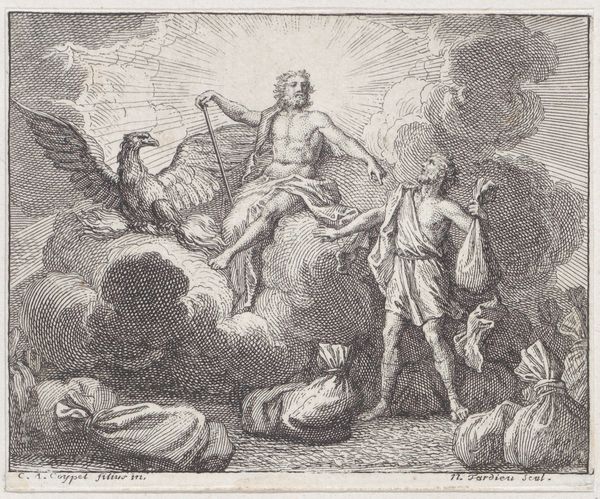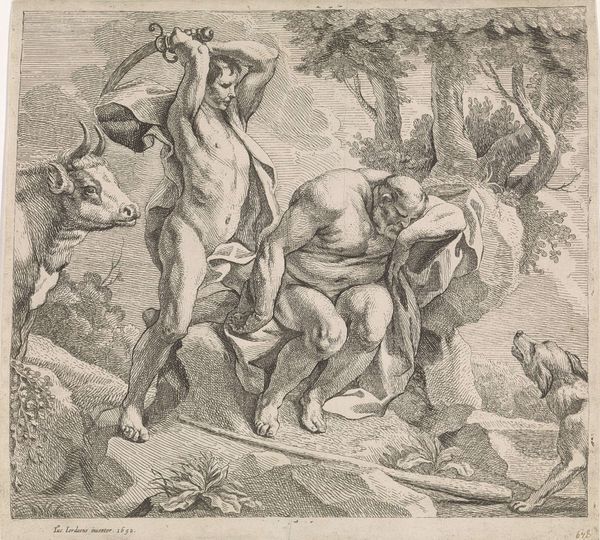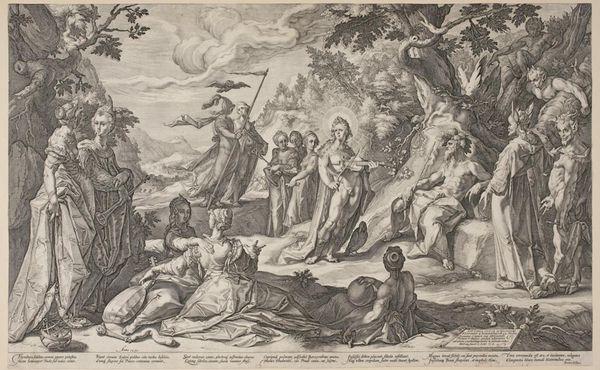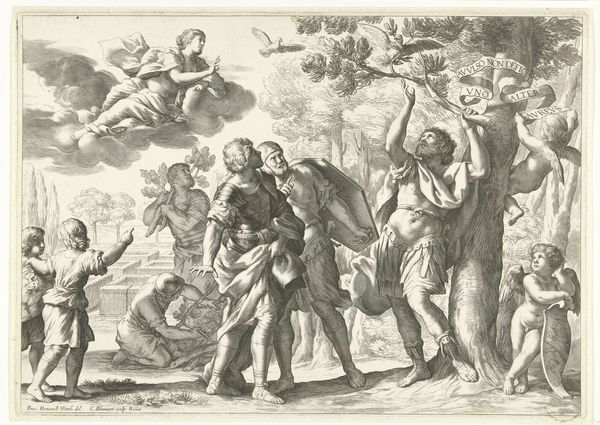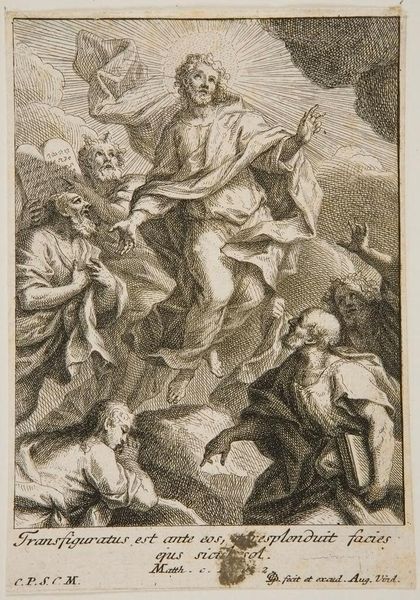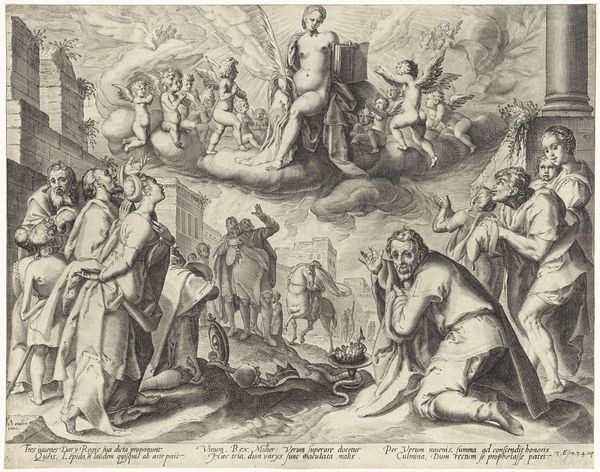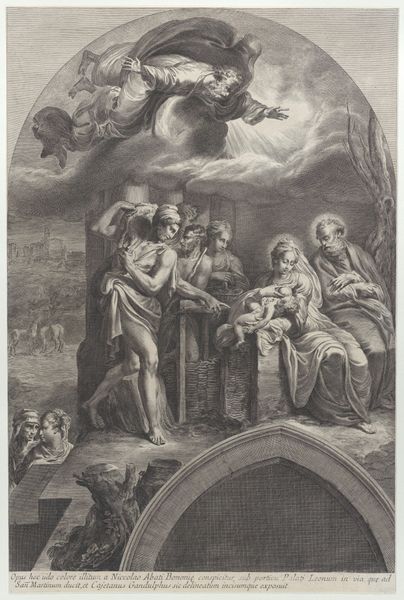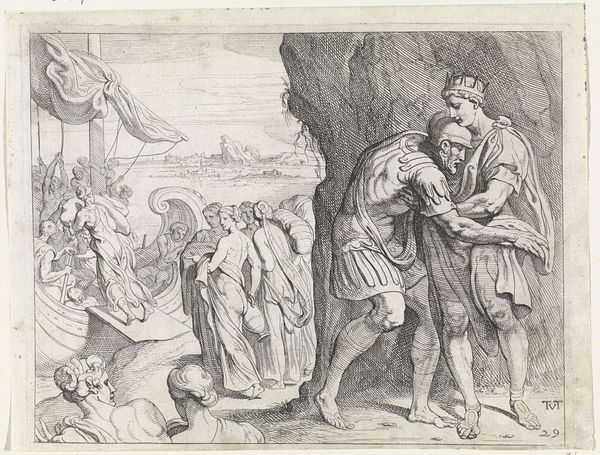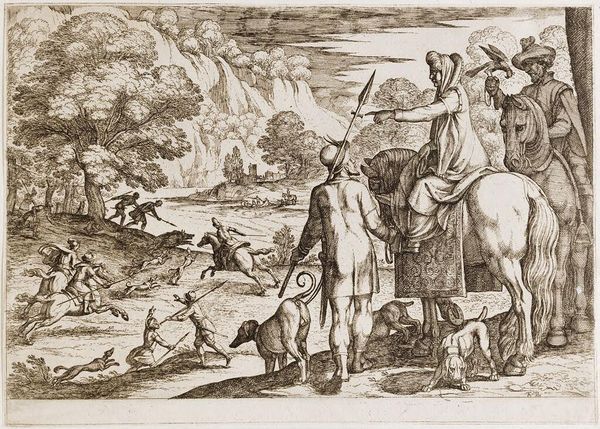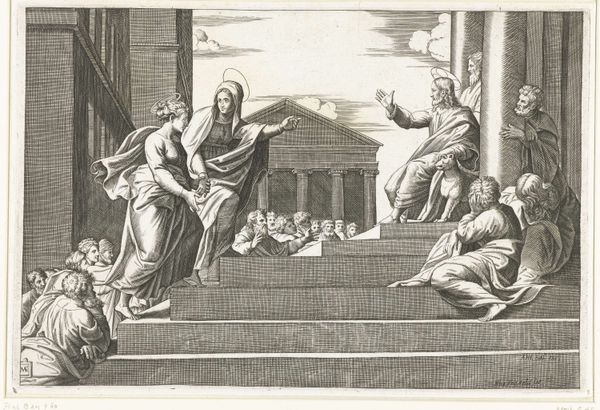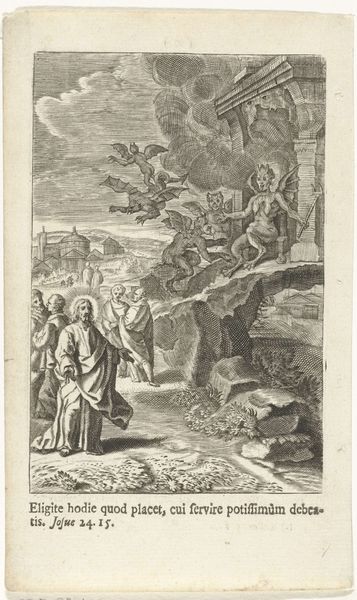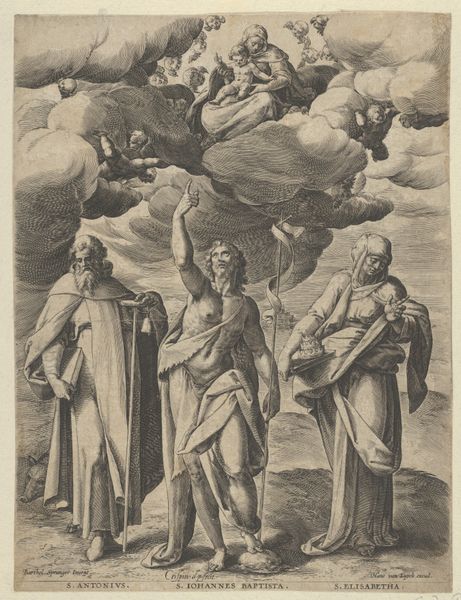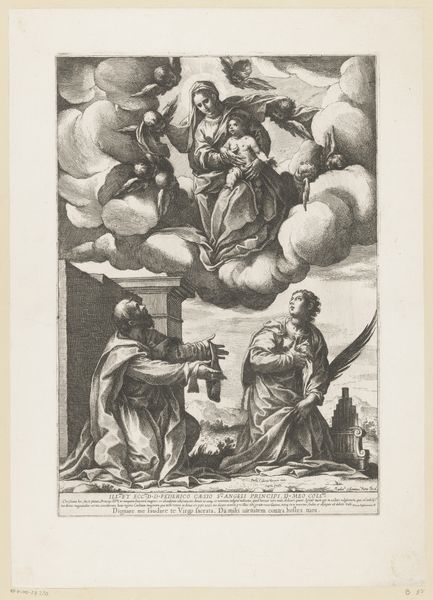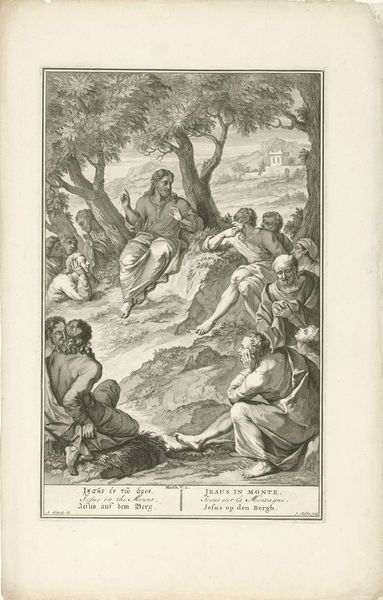
print, engraving
#
baroque
# print
#
figuration
#
line
#
history-painting
#
engraving
Dimensions: height 265 mm, 418 mm
Copyright: Rijks Museum: Open Domain
Jacob Matham created this print called Transfiguratie around the turn of the 17th century. Note the figures of Moses and Elijah flanking the radiant Christ, symbols deeply rooted in religious history. Moses, often depicted with horns symbolizing divine enlightenment, recalls ancient Near Eastern traditions of deities with horned headdresses, signifying power and authority. Here, he holds the tablets of the Law. Elijah represents the prophets, connecting Christ to the Old Testament. These motifs echo across cultures and eras. Think of the ubiquitous halo, found not only in Christian art, but also in depictions of Roman emperors and Buddhist figures, all denoting a sacred aura. Consider the emotional impact of the transfiguration. The apostles' awe and humility, rendered through their gestures of reverence or fear, engage viewers on a subconscious level. These are timeless expressions of human encounters with the divine, resonating with our own existential questioning. These symbols reappear and evolve, reflecting a non-linear cyclical progression through history.
Comments
No comments
Be the first to comment and join the conversation on the ultimate creative platform.
